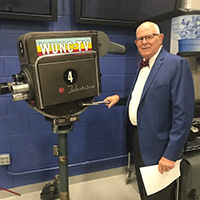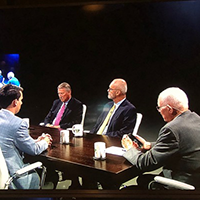Class size mandate bad choice for schools
Published February 3, 2017
Published by Greenville Daily Reflector, January 29, 2017.
A provision slipped into the state budget over the summer offers more evidence that lawmakers are determined to gut public schools and steer parents in Pitt County to alternatives that aren’t necessarily better.
The mandate said Pitt County Schools and public districts across the state must reduce class sizes in their primary grades by as many as eight students. The budget sets the maximum at 18 students in a kindergarten class, 16 students in first grade and 17 in second- and third-grade classes. Many of our classes now hold up to 24 students.
Smaller class sizes are great. Teachers can do a better job if they have fewer students to divide their attention. However, if the school district pulls a half dozen or so kids each from K-3 classes across the county to get them down to size, then it must find somewhere to put all those kids and hire a lot more people to teach them.
Superintendent Ethan Lenker estimates that would force the school system to open 65 more classrooms. Many of them would have to be mobile units. Others would have to be converted from other uses. The system has few empty classrooms. “That could cause lots of issues countywide,” Lenker told a Board of Education workshop last week.
The kicker is that the General Assembly appropriated no funds to pay for any new classroom space. Funds for mobile units, construction or renovation would have to come out of local coffers. The county would have to pay for eight new classrooms at Wintergreen Primary and Intermediate alone at a cost of up to $500,000.
Funds for teachers are distributed on a per-pupil basis, so theoretically money for 65 more should be available, but realistically per-pupil funds pay for a lot more than just salaries. The schools likely would have borrow and steal from other programs — the arts and athletics have been a topic of conversation — and convert non-teaching positions to find the money. Even then it is unclear whether minimally acceptable teachers could be found in a state that ranks in the bottom quarter nationally for teacher pay.
In exchange for the mandate, the General Assembly offers parents and taxpayers more “Opportunity Scholarships” and more charter schools. The scholarships, known as vouchers, give parents a stipend of tax money they can use to offset tuition at private schools; charter schools receive per-pupil funding but operate outside of traditional public systems.
There is no guarantee that private schools and charters will offer a better education than public schools do. They are not required to meet the same academic and employment standards or provide the same services. Ironically, they are not even required to meet the maximum class size mandate now set for public schools.
Public schools aren’t perfect, but many parents would just as soon choose them and work to make them better than choose an alternative. The General Assembly would be better off to help those parents instead of steering them somewhere else.







